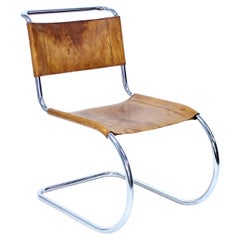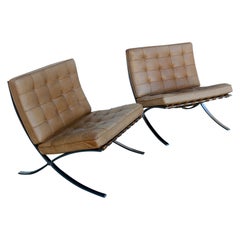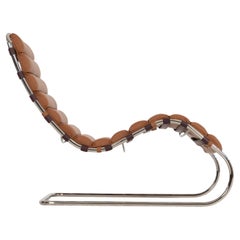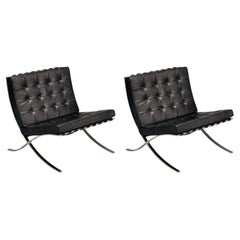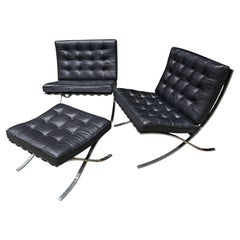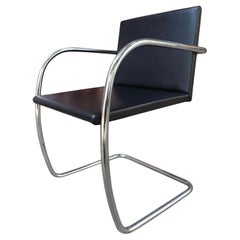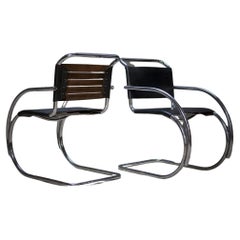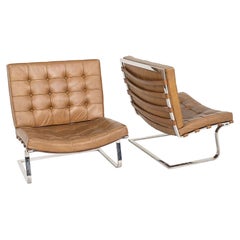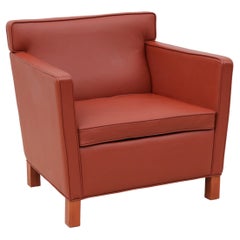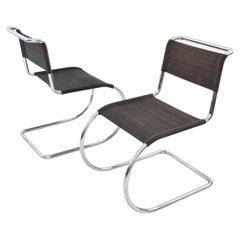Ludwig Mies van der Rohe
Architect, furniture designer and educator, Ludwig Mies van der Rohe was a central figure in the advancement and promotion of modernist design and architectural theory and practice. Like Frank Lloyd Wright and Le Corbusier, he was a hugely influential presence in the field, who shaped the course of 20th-century architecture both through his buildings and his teaching of rationalist design principles.
Born in the medieval German city of Aachen, Mies found an interest in architecture as a boy while working for his father, a master stonemason. He had no formal education as an architect, but learned his skills as an apprentice to the designer Bruno Paul, and as a staffer in the office the proto-modernist architect and designer Peter Behrens. Following World War I, Mies rose to prominence in his field amid the liberal atmosphere of the Weimar Republic. His reputation was secured by his work on the German Pavilion at the 1929 International Exposition in Barcelona (commonly referred to as the Barcelona Pavilion) — which Mies codesigned with Lilly Reich, his creative and romantic partner — a radically simple, poetic, open-plan building pared down to its architectural essentials. Mies would go on to direct the Bauhaus from 1930 until 1933, when Nazi-government interference forced the closure of the progressive art and design school. Later that decade, he made his way to Chicago, where he remained for the rest of his career as a practicing architect and a dean of the Illinois Institute of Technology.
Mies’s famed dictum “less is more” grew from his belief that architecture both guides and expresses the spirit of the times, and he envisioned the 20th century as open-minded, logical, transparent and liberated by technology. His best-known buildings — residences such as the Villa Tugendhat in Czechoslovakia and the Farnsworth House in rural Illinois; skyscrapers like the 860–880 Lake Shore Drive apartment towers in Chicago and the Seagram Building in New York — reflect that philosophy. As do the most famous furniture designs authored by him or codesigned with Reich.
Pieces designed by Mies and Reich such as the Barcelona chair (the authorized version is produced by Knoll today), stools and daybed, or the cantilevered Brno chairs, deliver a maximum of comfort and support from a minimum of materials: their “lavishness” derives from the precision with which they are engineered and constructed. For the collector, the allure of Mies’s furniture is at once practical and idealistic. Useful and functional, his works embody the highest aspirations of modernism.
Find vintage Mies van der Rohe chairs, tables and other furniture on 1stDibs.
| Average Sold Price |
| $4,345 |
| Styles |
| Materials |
| Related Creators |
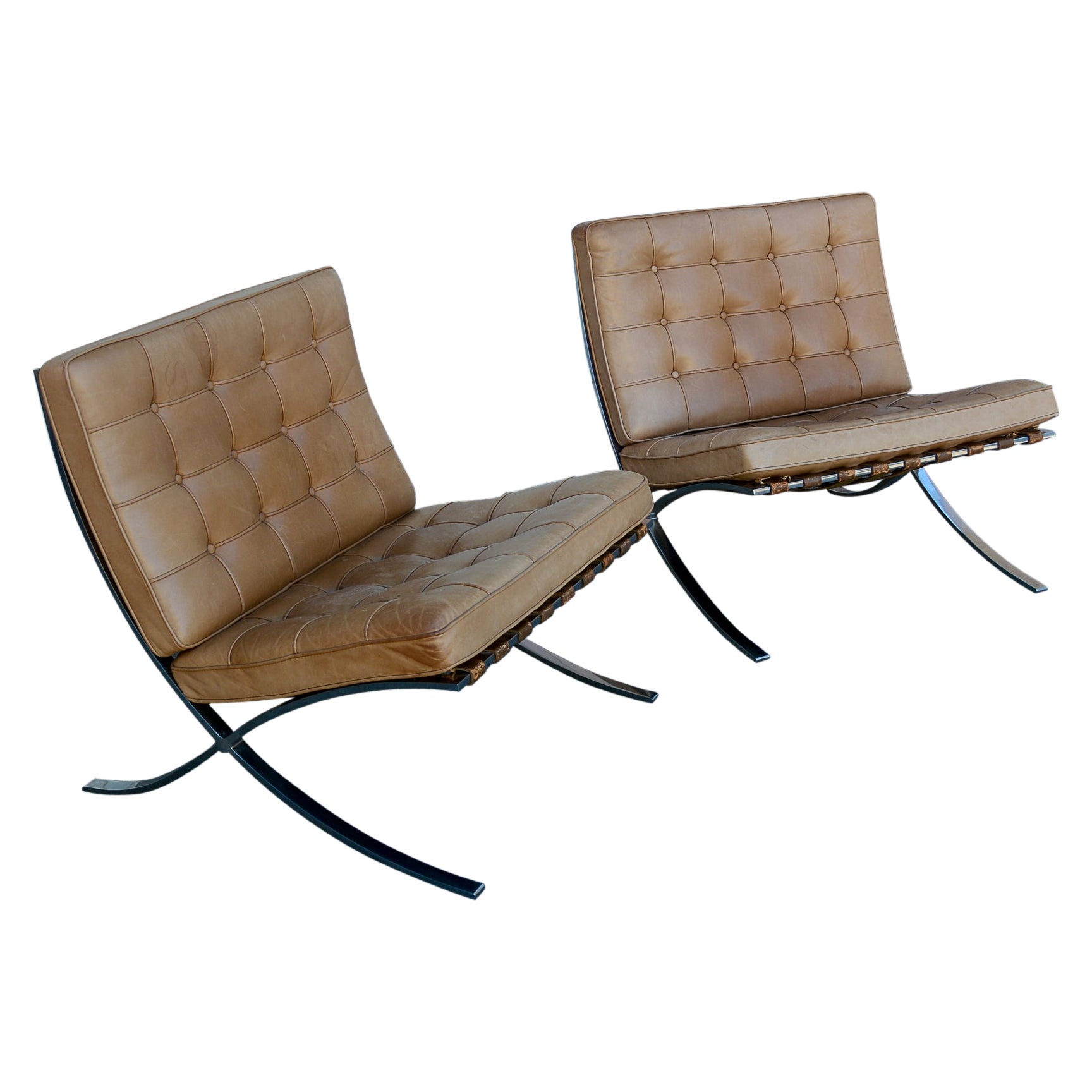
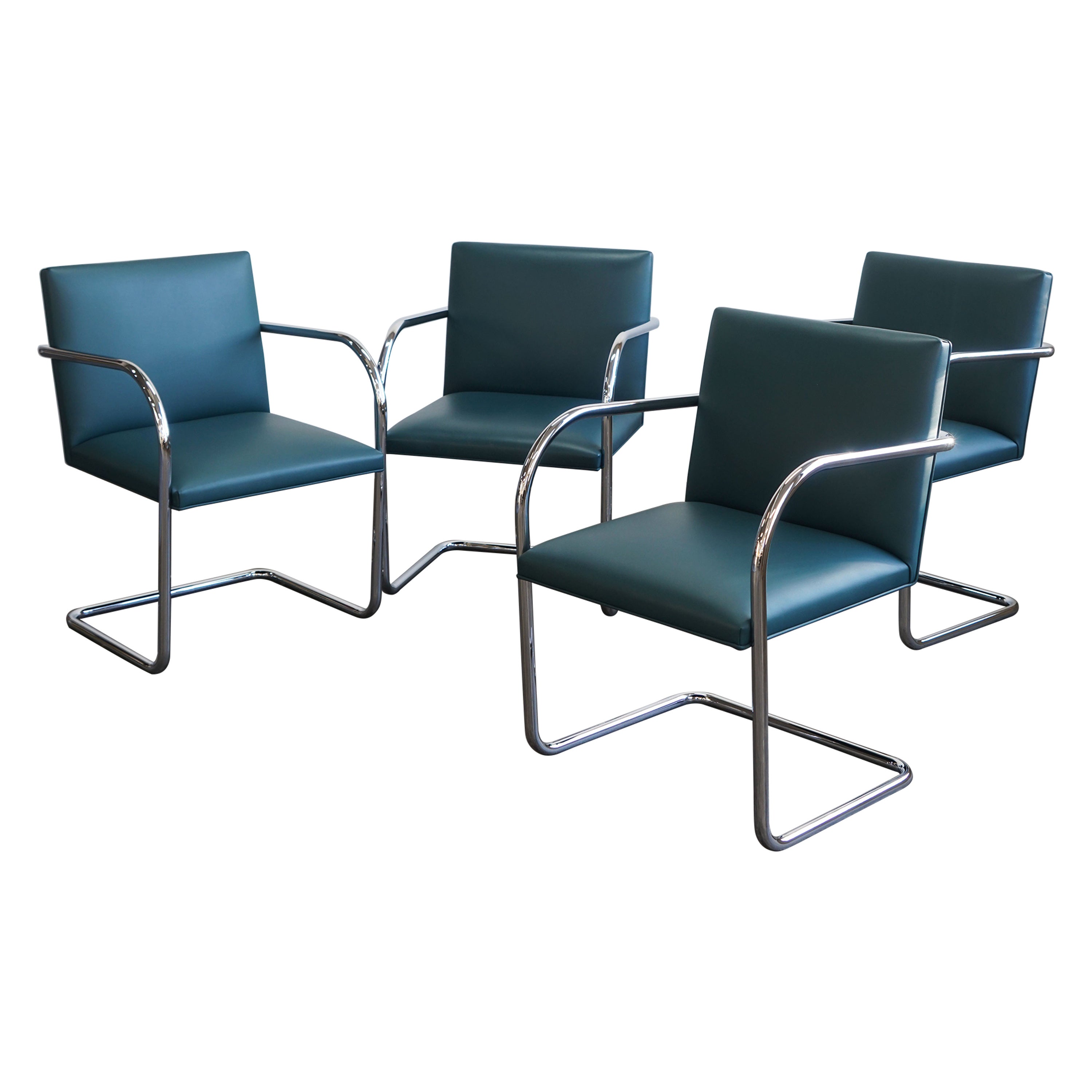
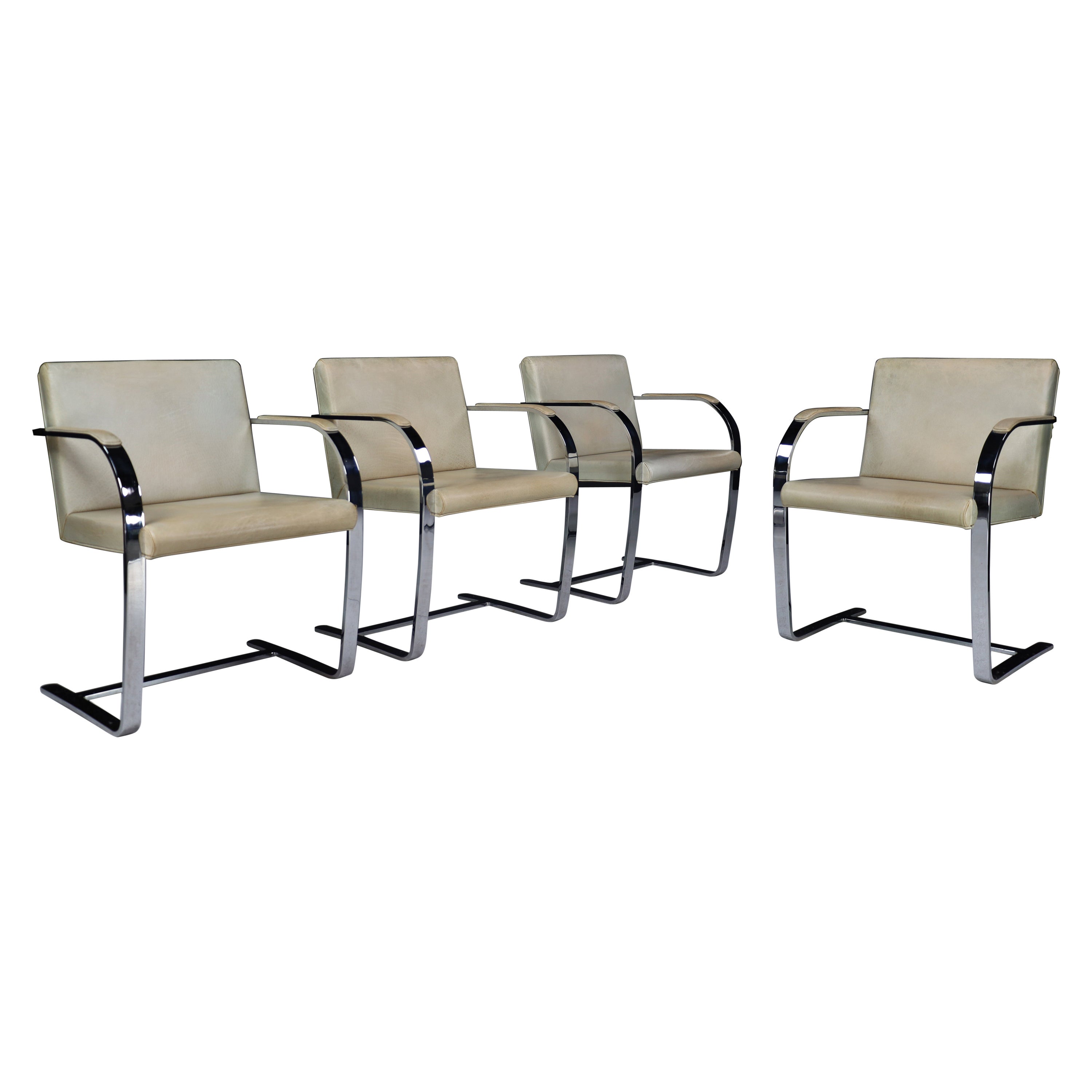

1930s Austrian Bauhaus Vintage Ludwig Mies van der Rohe
Steel
Mid-20th Century German Mid-Century Modern Ludwig Mies van der Rohe
Stainless Steel
1970s American International Style Vintage Ludwig Mies van der Rohe
Stainless Steel
1980s American Vintage Ludwig Mies van der Rohe
Chrome
1960s German Mid-Century Modern Vintage Ludwig Mies van der Rohe
Steel
1960s American Mid-Century Modern Vintage Ludwig Mies van der Rohe
Chrome
1960s German Mid-Century Modern Vintage Ludwig Mies van der Rohe
Steel
Mid-20th Century American Mid-Century Modern Ludwig Mies van der Rohe
Stainless Steel
Popular Searches
Ludwig Mies van der Rohe Sale Prices
| Sold Date | Sold Price | Category | Material | Creation Year | ||||||||||||||||||||||||||||||||||||||||||||||||||||||||||||||||||||||||||||||||||||||||||||||||
|
| $4,345 |
Average sold price of items in the past 12 months |
| $539-$13,296 |
| Sold price range of items in the past 12 months |
Creators Similar to Ludwig Mies van der Rohe




Read More
The 21 Most Popular Mid-Century Modern Chairs
You know the designs, now get the stories about how they came to be.
Mies van der Rohe’s Barcelona Chair Shook Modernism and Charmed Hollywood
The enduring appeal of the Barcelona chair is in the details.
Kule and Forsyth Give Iconic Furniture a Bold Makeover with Stripes
Maggie and Anne Genovese, of Forsyth, teamed up with fashion designer Nikki Kule to reimagine some classic pieces.
How Chicago, Mies van der Rohe’s Adopted Home, Remembers the Architect
The Windy City's Matthew Rachman Gallery takes a deep dive into the designer's practice.
Rooms We Love: 11 Splendid Living Rooms
Common wisdom used to declare the kitchen the hub of the house. These days, the living room seems to have assumed the role of domestic focal point. Unlike the Victorian parlor, stiffly furnished and reserved for guests, today’s living room is a central place for reading, conversation and, well, living, with furnishings that lend themselves to both casual lounging and elegant entertaining.
Tour an Ultramodern 1930 Villa by Mies van der Rohe
While designing Villa Tugendhat, the visionary architect also created some of his most iconic furniture pieces.
Ludwig Mies Van Der Rohe furniture for sale on 1stDibs.
- 1stDibs ExpertMarch 22, 2022Mies van der Rohe was known for many things. Some people associate him with the Bauhaus School, which he led from 1930 to 1933. Others associate him with his most famous architectural designs, including the Seagram Building in New York. In addition, Mies van der Rohe was an influential furniture designer and the dean of the Illinois Institute of Technology. Find a collection of Mies van der Rohe furniture on 1stDibs.
- Who is Ludwig Mies van der Rohe?1 Answer1stDibs ExpertMarch 22, 2022Ludwig Mies van der Rohe was an architect and furniture designer who helped to define modernist design. He served as the director of the Bauhaus from 1930 to 1933 and moved to Chicago, Illinois, in 1938. He designed many well-known buildings, including the Seagram Building in New York and the apartment towers on Lake Shore Drive in Chicago, where he later lived. On 1stDibs, find a collection of Mies van der Rohe furniture.
- 1stDibs ExpertMarch 22, 2022Ludwig Mies van der Rohe lived in the Lake Shore Drive apartment towers in Chicago. He moved to the city in 1938. Once there, Mies worked as an architect. He also served as the dean of the Illinois Institute of Technology. On 1stDibs, find a variety of Mies van der Rohe furniture.
- 1stDibs ExpertMarch 22, 2022No, Ludwig Mies van der Rohe was not famous for being a formalist. A formalist is a designer who adheres to strict rules of one particular style. Mies van der Rohe never attempted to work within the framework of one guiding architectural movement. Instead, he designed buildings and furniture to fit their purpose, always adhering to the principle of "less is more." Shop a range of Mies van der Rohe furniture on 1stDibs.
- 1stDibs ExpertMarch 22, 2022To pronounce Mies van der Rohe, say "meez van der roh." The architect and furniture designer Ludwig Mies van der Rohe went simply by the name Mies, but you will often see him referred to as "Mies van der Rohe" or as the full "Ludwig Mies van der Rohe." His birth name was Maria Ludwig Michael Mies. On 1stDibs, find a selection of Mies van der Rohe furniture.
- 1stDibs ExpertMarch 22, 2022No, Ludwig Mies van der Rohe is not famous for Gothic architecture. The period of Gothic architecture ranges from the 12th to 16th centuries. Mies van der Rohe was active from the 1920s to the 1960s. Historians consider him a modernist designer and architect. You'll find a collection of Mies van der Rohe furniture on 1stDibs.
- 1stDibs ExpertMarch 22, 2022No, Mies van der Rohe didn't win any major competitions. However, a well-known annual competition shares his name. The European Union awards the Mies van der Rohe Award for outstanding achievements in contemporary architecture every two years. Find a selection of Mies van der Rohe furniture on 1stDibs.
- 1stDibs ExpertMarch 22, 2022No, Mies van der Rohe was not in De Stijl, an art movement active in the Netherlands from 1917 to 1931. However, the movement did influence his thinking about design and helped inspire his work as the director of the Bauhaus from 1930 to 1933. On 1stDibs, find a variety of Mies van der Rohe furniture.
- 1stDibs ExpertMarch 22, 2022No, Mies van der Rohe was not a landscape architect. Although he had no formal architectural training, he designed many buildings around the world from the 1920s through the 1960s. Some of his most well-known designs include the Seagram Building in New York City, the Chicago Federal Complex and Farnsworth House, located in the suburbs of Chicago. On 1stDibs, find a selection of Mies van der Rohe furniture.
- 1stDibs ExpertMarch 22, 2022No, Mies van der Rohe is not most famous for the industrial style. However, many of his later buildings did employ materials typical in the style, such as industrial-grade steel and plate glass. You'll find a selection of Mies van der Rohe furniture on 1stDibs.
- 1stDibs ExpertMarch 22, 2022There are numerous Mies van der Rohe buildings. The campus of the Illinois Institute of Technology is home to 20 of his designs, such as the Minerals and Metals Research Building and the Engineering Research Building. Other Mies van der Rohe buildings found in Chicago include the Promontory Apartments, the 860-880 Lake Shore Apartments, the Chicago Federal Center and the Esplanade Apartment Buildings. Shop a selection of Mies van der Rohe furniture on 1stDibs.
- 1stDibs ExpertMarch 22, 2022Yes. Although he didn't restrict himself to that particular architectural style, Mies van der Rohe is famous for the international style. His work and buildings created by his students and followers heavily influenced the movement. You can see hallmarks of the style in the simplicity of his work, as well as in his use of steel and plate glass construction materials. You'll find a range of Mies van der Rohe furniture on 1stDibs.
- 1stDibs ExpertApril 5, 2022Marcel Breuer designed tubular steel furniture with Mies van der Rohe. It was Breuer who came up with the idea for using the material as a base for chairs, tables and other furnishings after he became fascinated by the frame of his bicycle. You'll find a variety of vintage tubular steel furniture on 1stDibs.
- 1stDibs ExpertMarch 22, 2022No, not everything that Mies van der Rohe produced is considered Bauhaus architecture. Generally, designs he created during the early 1930s, like the Villa Tugendhat in Brno, Czech Republic, fall under the category. Mies van der Rohe continued to design buildings for decades to come and experimented in a variety of styles. Shop a collection of Mies van der Rohe furniture on 1stDibs.
